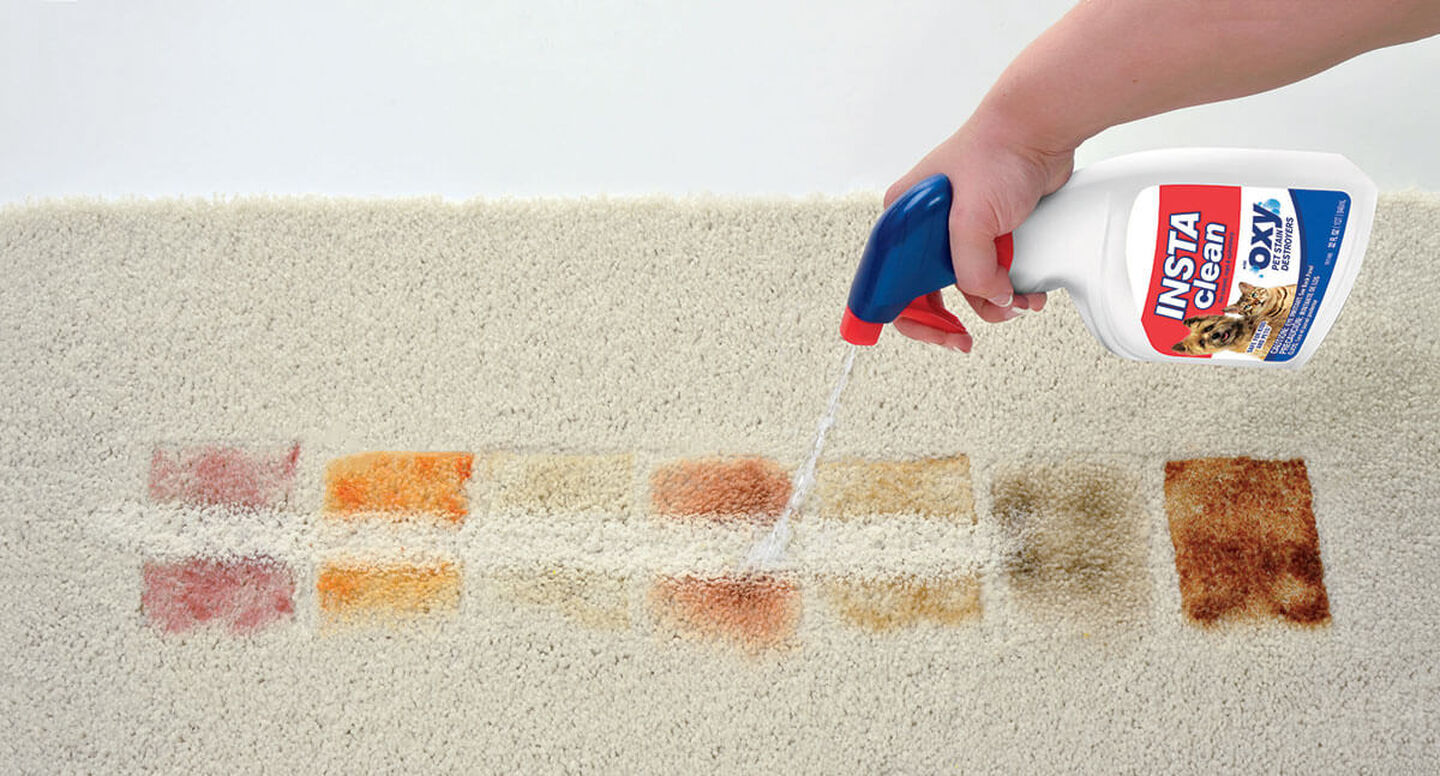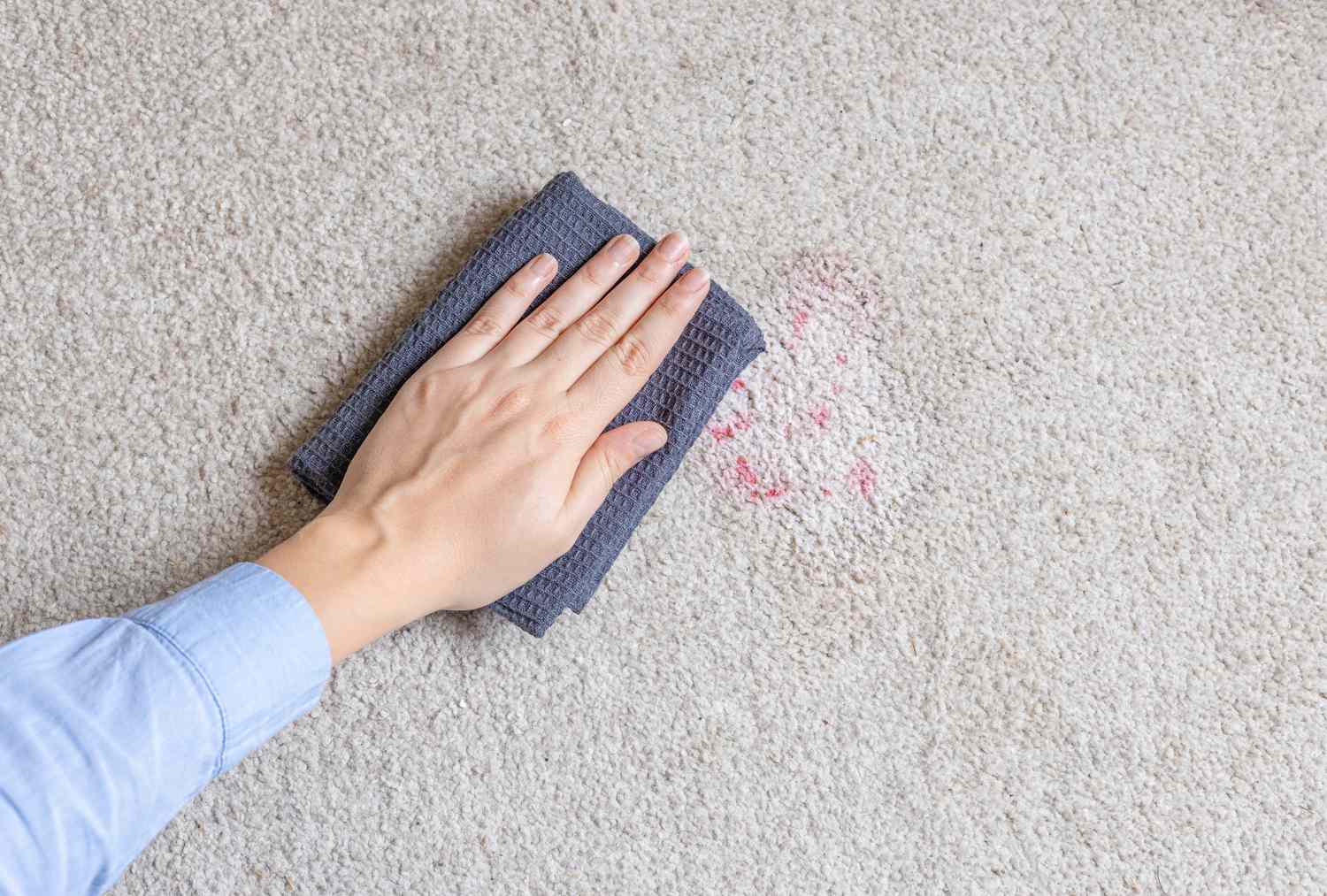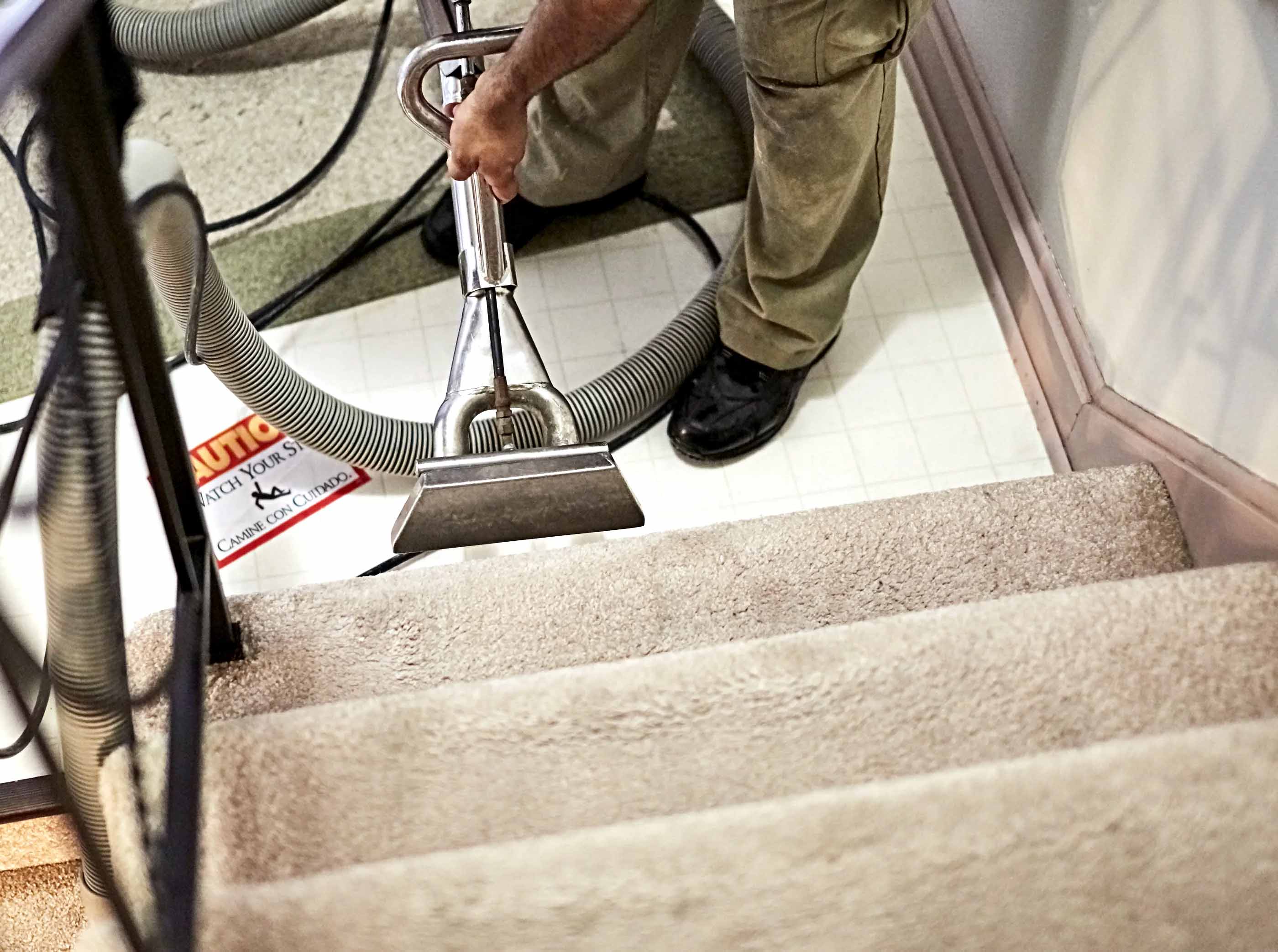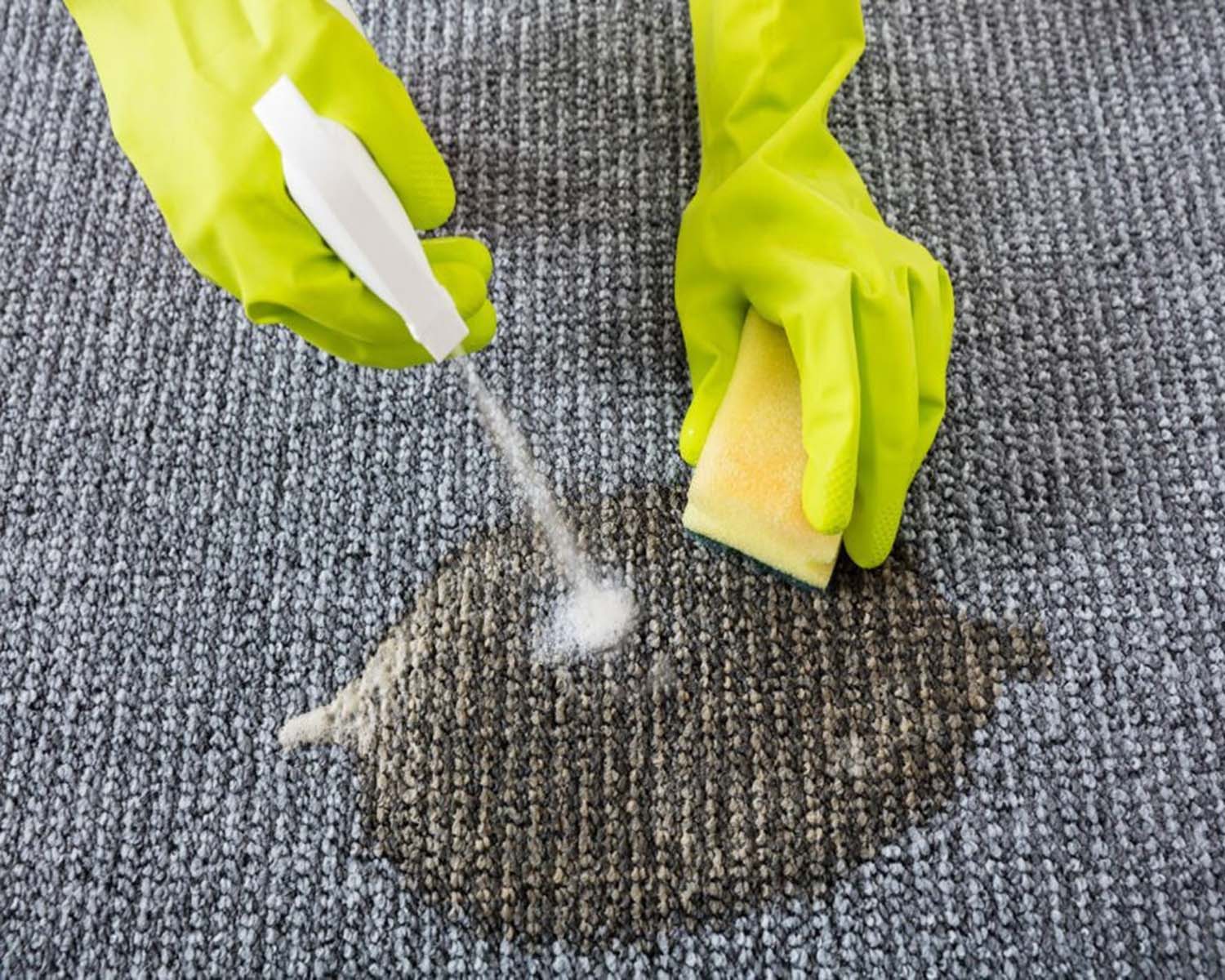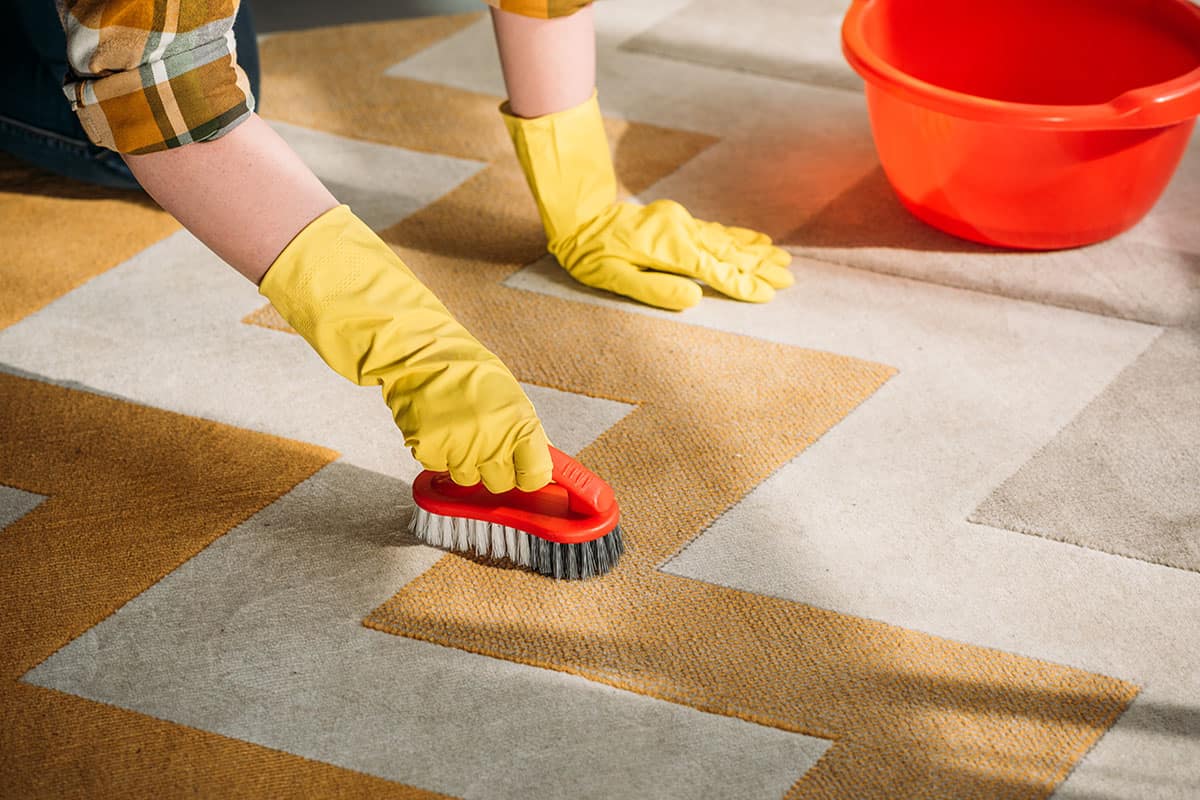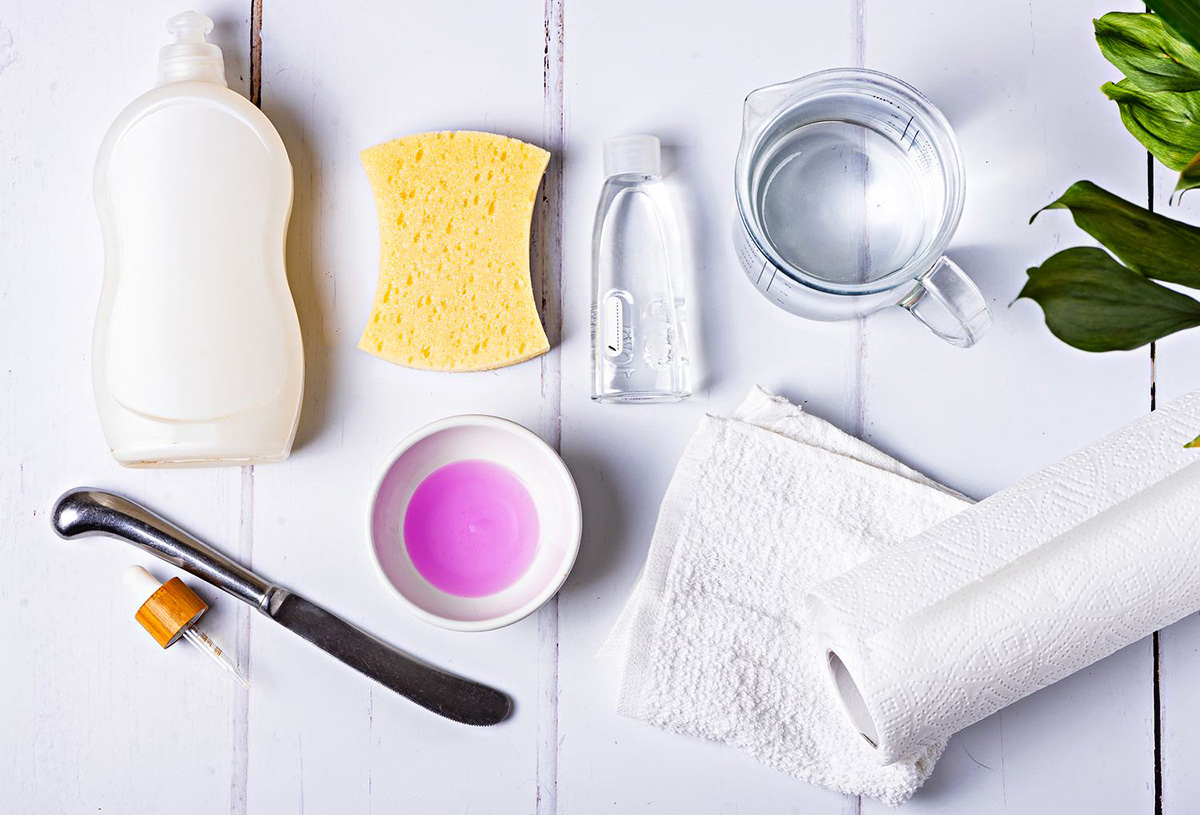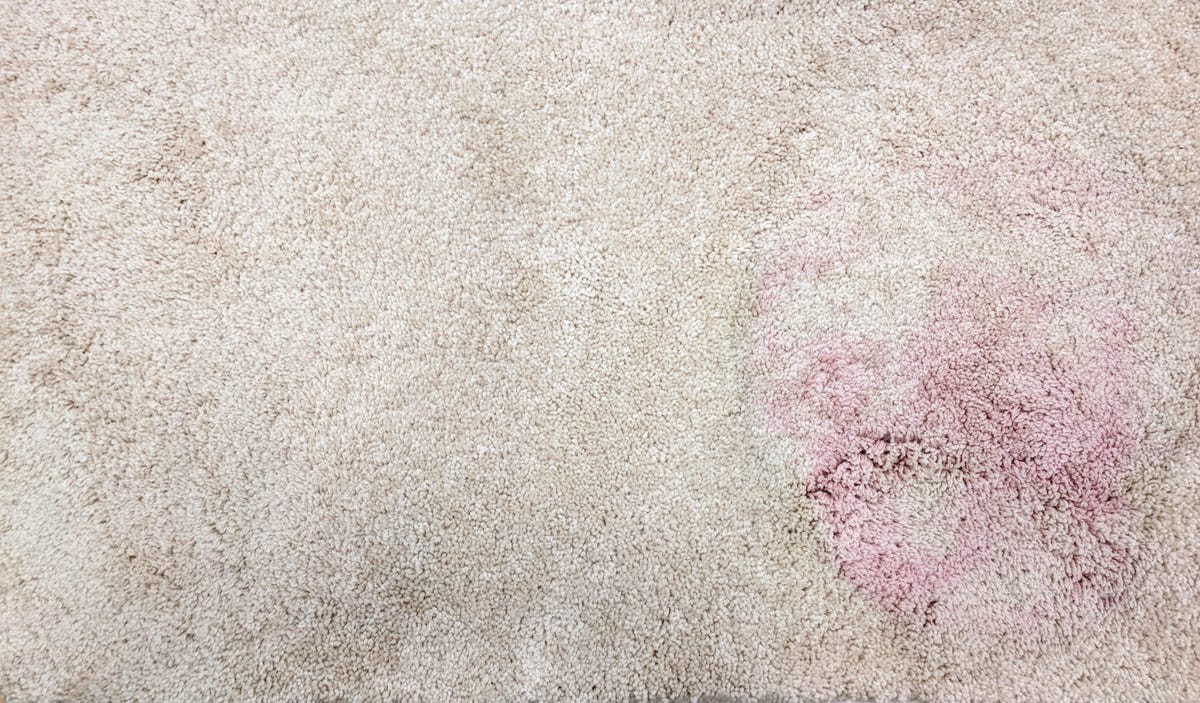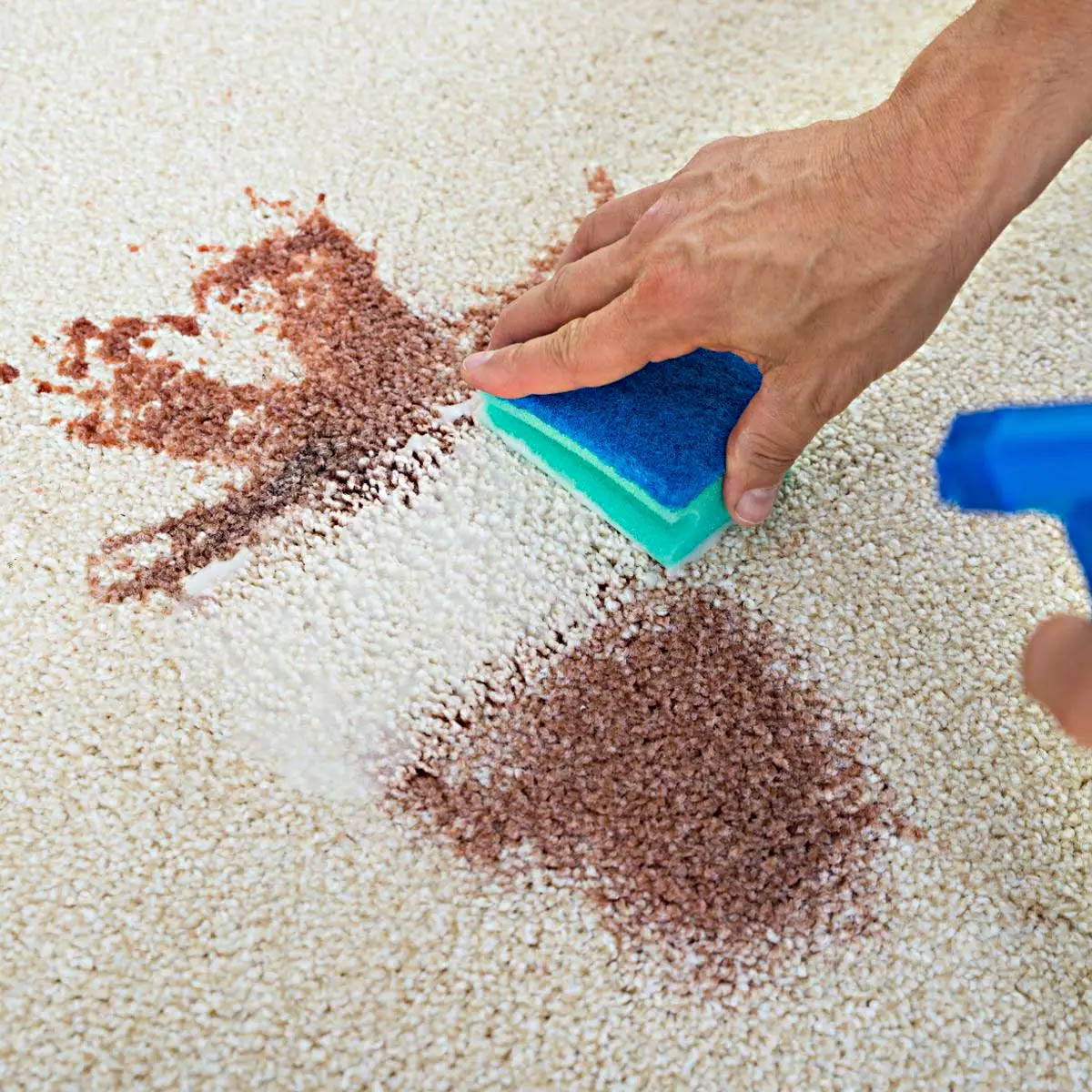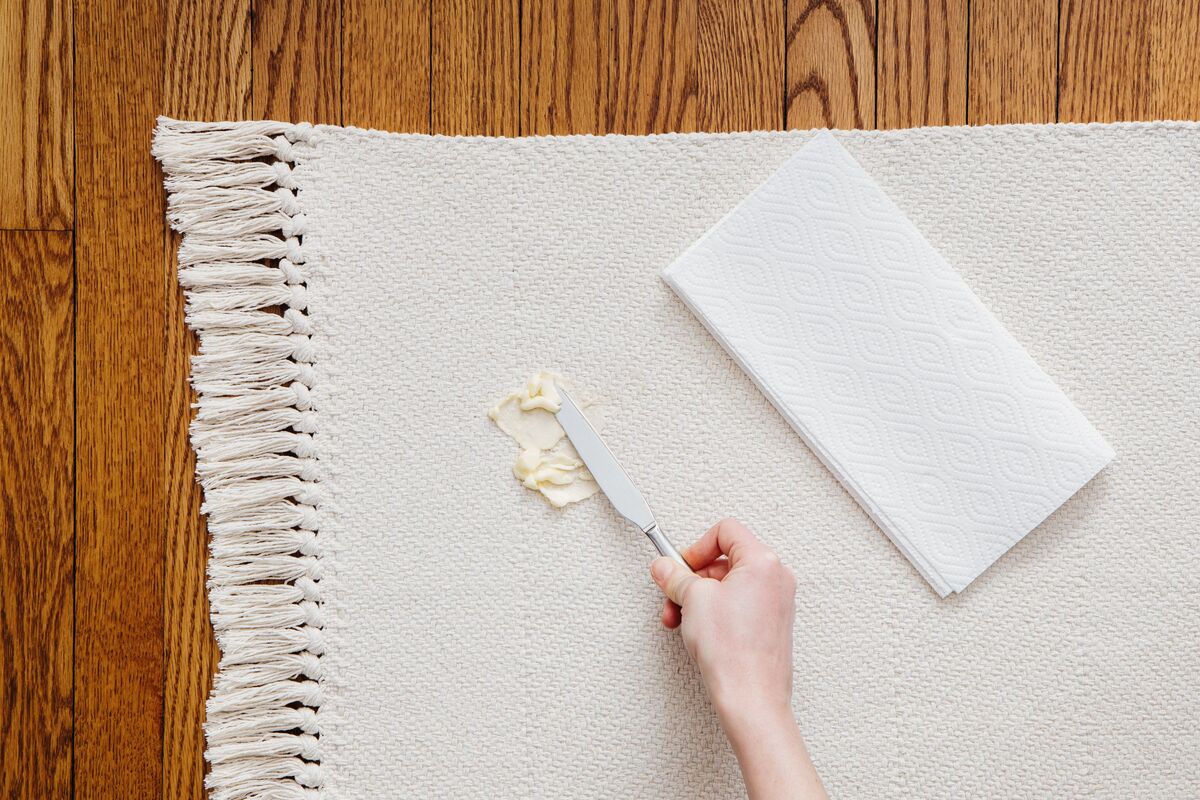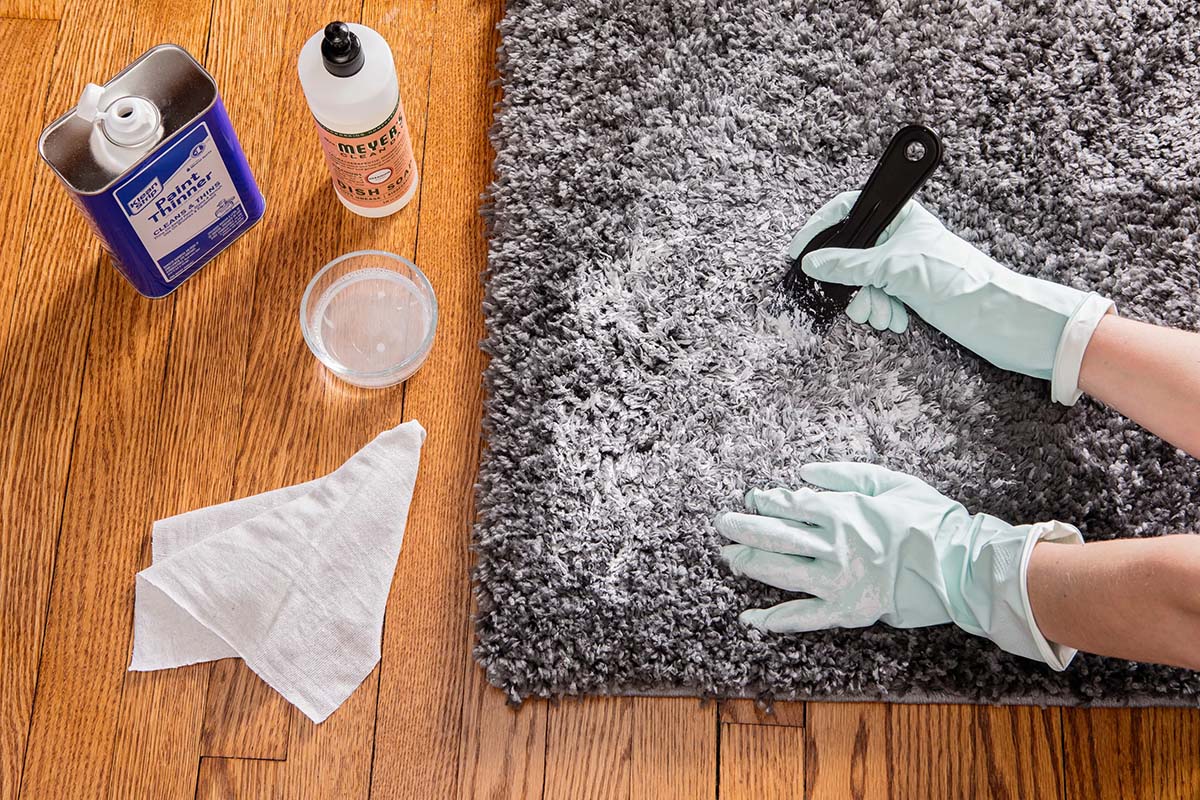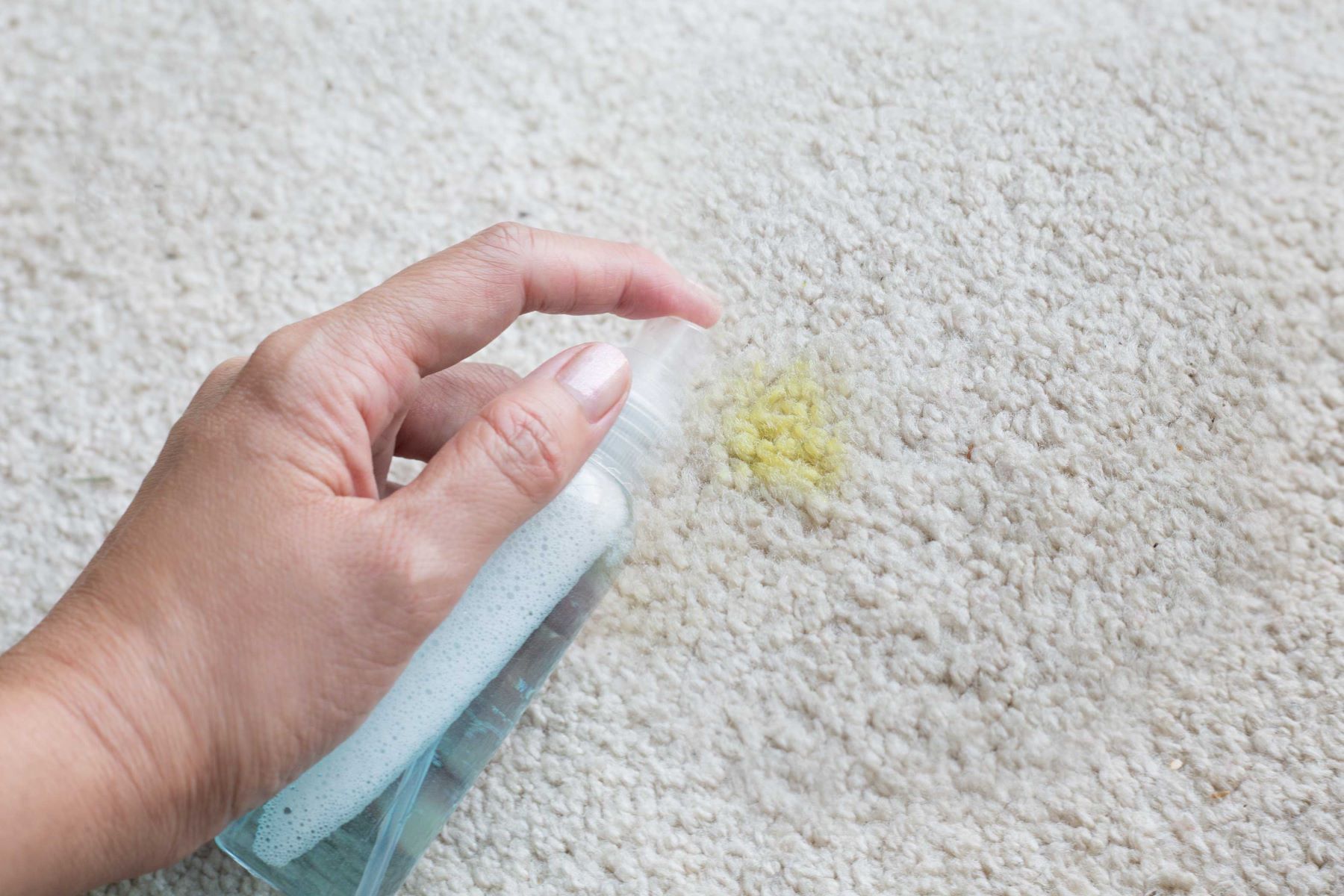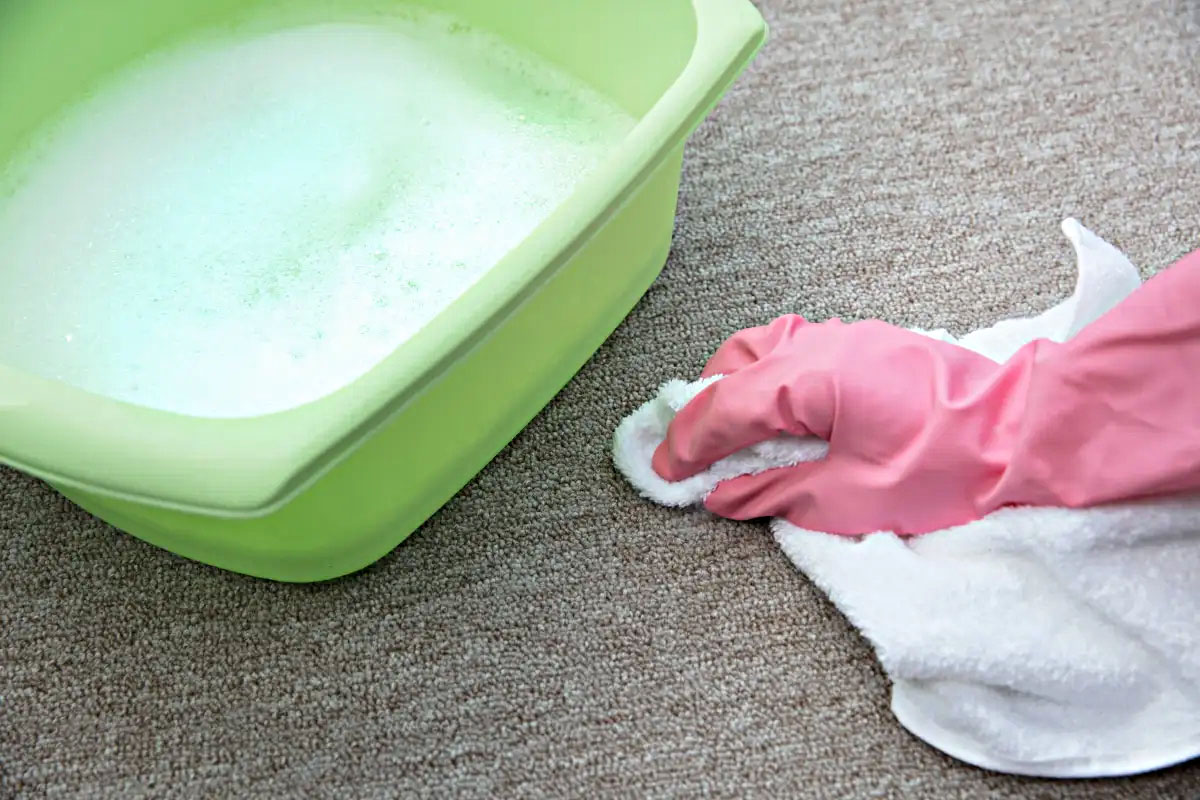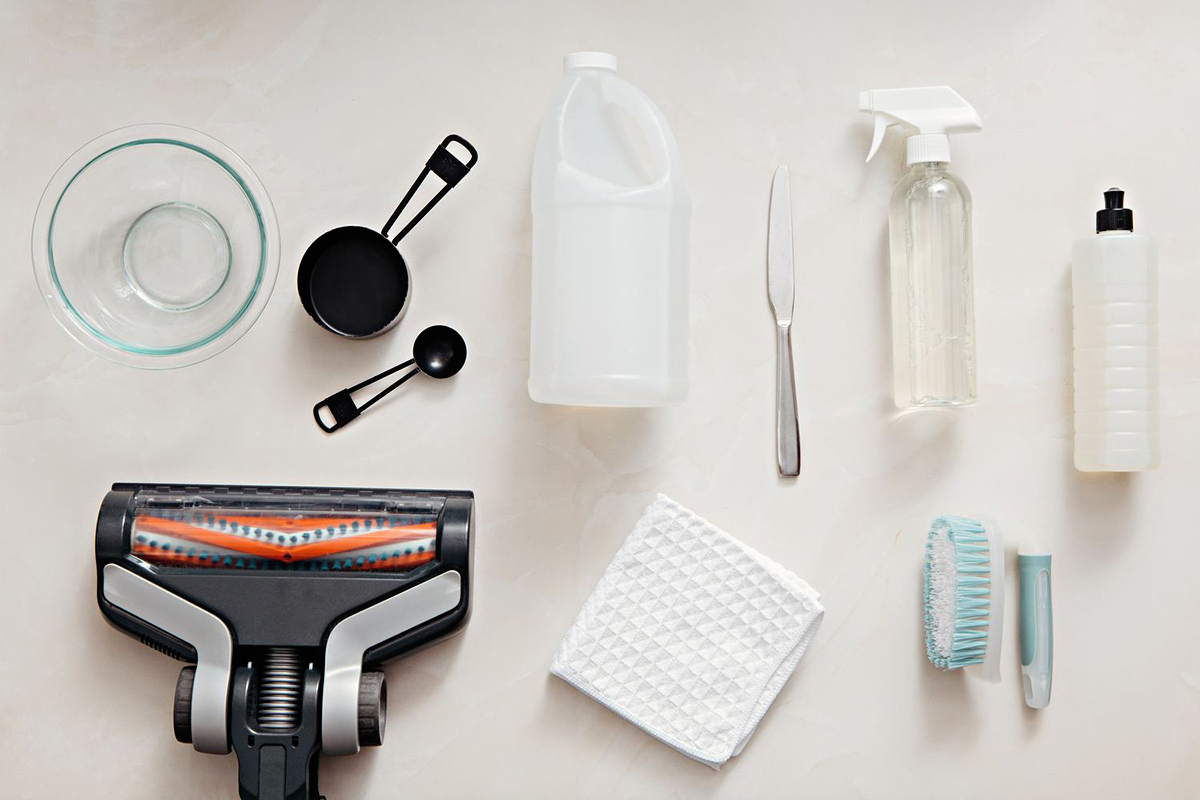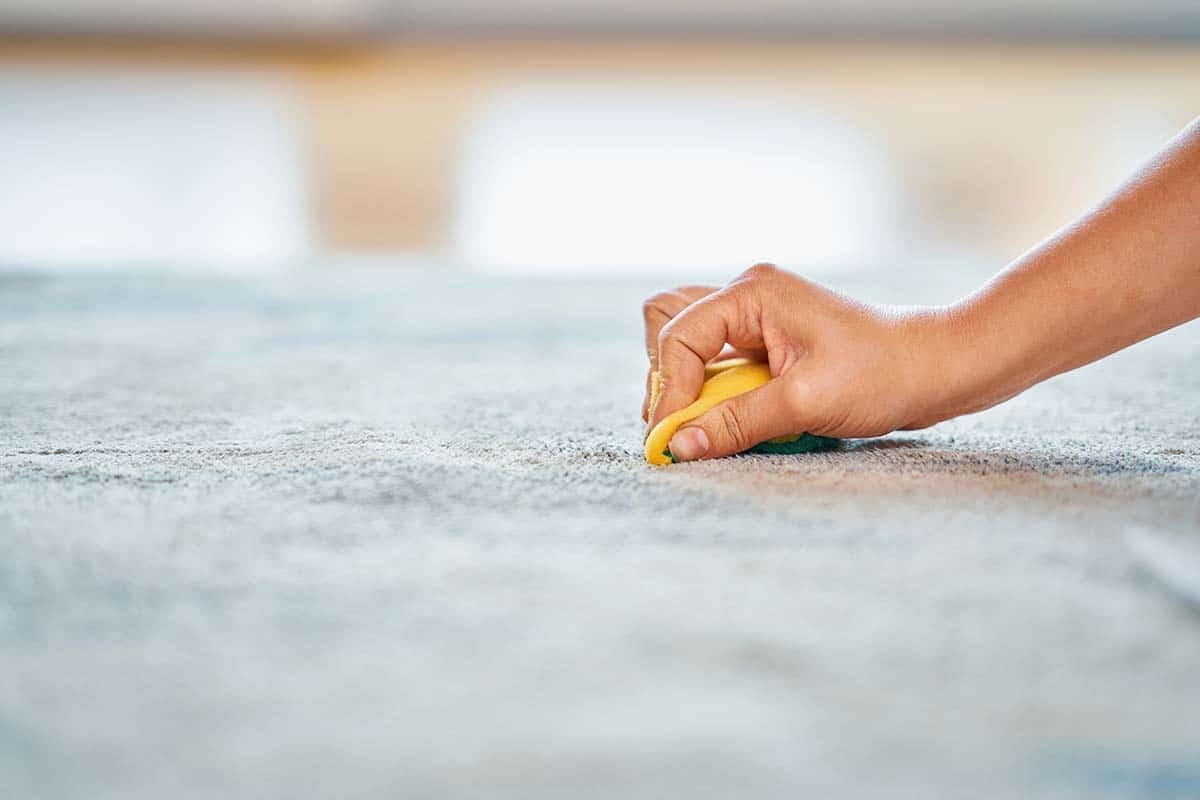

Articles
How To Get Dried Oil Stain Out Of A Carpet
Modified: September 1, 2024
Learn effective techniques and tips on how to remove stubborn, dried oil stains from your carpet in our informative articles.
(Many of the links in this article redirect to a specific reviewed product. Your purchase of these products through affiliate links helps to generate commission for Storables.com, at no extra cost. Learn more)
Introduction
Welcome to our comprehensive guide on how to get dried oil stains out of a carpet. Oil stains can be some of the trickiest stains to remove, especially when they have had time to dry and set into the fibers of your carpet. However, with the right techniques and products, you can successfully remove these stubborn stains and restore the beauty of your carpet. In this article, we will discuss various methods that you can use to effectively tackle dried oil stains on your carpet.
Oil stains can come from a variety of sources, including cooking oils, motor oils, and even body oils. These stains can leave unsightly marks on your carpet and can be quite challenging to remove. It is important to act quickly when dealing with fresh oil stains, as the longer they are left untreated, the more difficult they become to remove.
Before we dive into the specific methods, it is essential to understand that different types of carpets may require different approaches. Always check your carpet’s care instructions to ensure that the cleaning method you choose is suitable. Additionally, it is recommended to do a small patch test in an inconspicuous area of the carpet to ensure that the cleaning solution or method does not cause any color fading or damage.
Now that you understand the importance of prompt action and testing, let us explore the step-by-step methods to get rid of those dried oil stains from your carpet. Read on to discover effective techniques using common household items and cleaning solutions.
Key Takeaways:
- Don’t let dried oil stains ruin your carpet – act fast, prepare the area, and use household items like dish soap, baking soda, and vinegar to effectively remove stubborn stains.
- Regular maintenance and immediate action are crucial for preserving your carpet’s beauty. Follow our comprehensive guide to tackle dried oil stains and keep your carpet looking pristine.
Read more: How To Get An Oil Stain Out Of Carpet
Understanding Dried Oil Stains on Carpets
Dried oil stains on carpets can be particularly challenging to remove due to the absorbent and porous nature of carpet fibers. When oil is spilled on the carpet, it can quickly seep deep into the fibers, making it difficult to lift out completely. The longer the oil remains on the carpet, the more it can penetrate and bond with the fibers, causing a stubborn stain. Understanding the composition of oil stains can help you determine the most effective methods for removal.
Oil stains consist of hydrophobic substances that do not mix well with water. This is why simply using water alone is often ineffective in removing oil stains. Oil stains can come from a variety of sources, including cooking oils, motor oils, cosmetic oils, and even pet oils. Each type of oil may have different properties, such as viscosity and composition, which can impact the best approach to remove the stain.
It’s important to note that immediate action is crucial when dealing with oil stains. The longer the oil sits on the carpet, the more chance it has to penetrate deeper into the fibers and set in. Additionally, as the oil dries, it can oxidize and change in composition, making it even more difficult to remove.
Dried oil stains can cause discoloration and leave an unsightly mark on your carpet. In addition to the aesthetic concerns, oil can attract dirt and grime, making the stained area appear even darker and more prominent. Therefore, it is essential to address dried oil stains as soon as possible to prevent further damage and ensure successful removal.
By understanding the nature of dried oil stains and the challenges they present, you can better prepare yourself for effectively treating them. In the following sections, we will explore various methods and techniques that can help you remove dried oil stains from your carpet.
Preparing the Area
Before you begin the process of removing dried oil stains from your carpet, it is important to properly prepare the affected area. Preparation ensures that you have a clean and clear surface to work on, allowing for more effective stain removal. Here are some steps to follow when preparing the area:
- Clear the Area: Remove any furniture or objects from the stained area to prevent obstruction during the cleaning process. This will also prevent the possibility of accidentally transferring the stain to other surfaces.
- Blot Excess Oil: Use a clean cloth or paper towel to gently blot any excess oil from the surface of the carpet. Be careful not to rub or spread the stain further.
- Ventilate the Room: Open windows and doors to ensure proper air circulation in the room. This will help to reduce the strong smell that may come from the cleaning solutions.
- Protect Your Hands: Before you begin working with any cleaning solutions, it is recommended to wear gloves to protect your skin from harsh chemicals and potential irritants.
- Gather Cleaning Supplies: Ensure that you have all the necessary cleaning supplies readily available. This may include dishwashing detergent, baking soda or cornstarch, isopropyl alcohol, a commercial carpet cleaner, white vinegar, clean cloths or paper towels, and a soft-bristle brush.
By taking the time to properly prepare the area, you set yourself up for a more successful cleaning process. Remember, it is also important to read and follow the instructions on the cleaning products you intend to use, as different products may have specific guidelines for application and usage.
Now that you have prepared the area, you are ready to move on to the next step: removing the excess oil from the carpet.
Removing the Excess Oil
Once you have prepared the area and cleared away any obstructions, it’s time to tackle the first step in removing dried oil stains from your carpet – getting rid of the excess oil. By eliminating as much of the oil as possible before applying any cleaning solutions, you’ll improve the effectiveness of the subsequent stain removal techniques. Here’s how to remove the excess oil:
- Blot with Absorbent Materials: Start by blotting the stained area with a clean cloth, paper towels, or absorbent materials. Gently press down on the stain without rubbing, as rubbing can push the oil further into the carpet fibers.
- Use a Spatula or Spoon: If the oil stain is sticky or still fresh, carefully scrape off any excess oil using a plastic spatula or spoon. Be gentle to avoid damaging the carpet fibers.
- Apply Talcum Powder or Cornstarch: Sprinkle talcum powder or cornstarch directly onto the stained area. These powders are highly absorbent and can help to draw out the remaining oil. Allow the powder to sit on the stain for about 15 minutes, then use a vacuum cleaner to remove it.
- Repeat as Needed: If there is still visible oil on the carpet after the initial blotting and powder application, repeat the process until no more oil can be lifted off.
Remember, it’s important to remove as much of the excess oil as possible before proceeding to the next steps. This will prevent the oil from further penetrating the carpet fibers and make the stain removal process more effective overall.
Once you have successfully removed the excess oil, you can move on to the next step – using dishwashing detergent to break down the stubborn oil stain.
Using Dishwashing Detergent
One of the most effective and readily available cleaning solutions for removing dried oil stains from carpets is dishwashing detergent. Dish soap is designed to cut through grease and oil, making it an excellent choice for tackling stubborn stains. Here’s how to use dishwashing detergent to remove oil stains from your carpet:
- Dilute the Dish Soap: Start by diluting a small amount of dishwashing detergent in a bowl of warm water. Be sure to follow the instructions on the detergent bottle for the proper dilution ratio.
- Apply the Solution: Dip a clean cloth or sponge into the soapy solution. Gently blot the stained area with the cloth, working from the outside in. Avoid rubbing, as this can spread the stain further.
- Allow the Solution to Sit: After applying the soapy solution, let it sit on the stain for about 10-15 minutes. This will give the detergent time to break down the oil and loosen its grip on the carpet fibers.
- Blot with Clean Water: Once the solution has had time to work, dampen a clean cloth or sponge with plain water. Blot the area to rinse away the soap residue and oil. Repeat this step as necessary.
- Dry the Area: Finally, use a dry cloth or paper towels to blot the treated area and absorb any excess moisture. It’s important to dry the carpet thoroughly to prevent the growth of mold or mildew.
Using dishwashing detergent can be highly effective in breaking down the oil stain and lifting it from the carpet fibers. However, it’s important to note that not all carpets may respond well to this method. Always check the care instructions for your carpet and perform a patch test in an inconspicuous area before applying the detergent solution to the stained area.
If the dishwashing detergent method did not fully remove the dried oil stain, don’t worry. There are alternative methods that you can try, such as applying baking soda or dabbing with isopropyl alcohol, which will be discussed in the next sections.
Read more: How To Get Dried Tea Stain Out Of A Carpet
Applying Baking Soda or Cornstarch
If the oil stain on your carpet persists after using dishwashing detergent, another effective method to try is applying baking soda or cornstarch. These household ingredients are known for their absorbent properties, making them useful for lifting out stubborn stains. Here’s how you can use baking soda or cornstarch to remove dried oil stains from your carpet:
- Blot the Stain: Before applying baking soda or cornstarch, gently blot the stained area with a clean cloth or paper towels to remove any excess oil.
- Apply the Absorbent Powder: Sprinkle a generous amount of baking soda or cornstarch directly onto the oil stain. Ensure that the powder covers the entire stained area. Allow it to sit and absorb the oil for at least 30 minutes or overnight for best results.
- Vacuum the Powder: Once the powder has had time to work its magic, use a vacuum cleaner to thoroughly remove it from the carpet. Make sure to vacuum up all the powder until the carpet feels clean and dry.
- Inspect the Stain: After vacuuming, assess the stain to see if it has lightened or disappeared. If necessary, repeat the process with fresh baking soda or cornstarch until the stain is completely removed.
Baking soda and cornstarch work by absorbing excess oil from the carpet fibers, and their gritty texture helps to lift the stain. These methods are relatively gentle and safe to use on most carpets. However, to ensure compatibility with your carpet, perform a patch test in an inconspicuous area before applying the baking soda or cornstarch to the oil stain.
If the oil stain persists even after using baking soda or cornstarch, consider trying the next method – dabbing the stain with isopropyl alcohol.
Blot the stain with a clean cloth to remove excess oil. Sprinkle baking soda or cornstarch on the stain and let it sit for 15 minutes. Vacuum up the powder and repeat if necessary. Then, apply a carpet stain remover and blot with a clean cloth.
Dabbing with Isopropyl Alcohol
If the dried oil stain on your carpet remains stubborn even after using dishwashing detergent or absorbent powders, another effective method to try is dabbing the stain with isopropyl alcohol. Isopropyl alcohol, also known as rubbing alcohol, is a solvent that can help dissolve and remove oil-based stains. Here’s how you can use isopropyl alcohol to remove dried oil stains from your carpet:
- Test in an Inconspicuous Area: Before applying isopropyl alcohol to the oil stain, test it in a small, hidden area of the carpet to ensure it doesn’t cause any discoloration or damage.
- Blot the Stain: Start by blotting the stained area with a clean cloth or paper towels to remove any excess oil or residue.
- Apply Isopropyl Alcohol: Dampen a clean cloth with isopropyl alcohol and gently dab the stain. Avoid rubbing, as this can spread the stain further. Let the alcohol sit on the stain for a few minutes to allow it to break down the oil.
- Blot with Water: After the isopropyl alcohol has had time to work, dampen another clean cloth with water and blot the area to rinse out the alcohol and oil. Repeat this step as necessary.
- Dry the Area: Use a dry cloth or paper towels to blot the treated area and remove excess moisture. Allow the carpet to air dry completely.
Isopropyl alcohol is an effective solvent for oil-based stains, but it’s important to use it sparingly and avoid over-saturating the carpet. Additionally, keep in mind that isopropyl alcohol has a strong odor, so make sure the room is well-ventilated during and after the cleaning process.
If the dried oil stain persists even after using isopropyl alcohol, there is one more method you can try – treating the stain with a commercial carpet cleaner.
Treating with Commercial Carpet Cleaner
If the dried oil stain on your carpet proves to be stubborn and resistant to other cleaning methods, using a commercial carpet cleaner can be an effective solution. Commercial carpet cleaners are specifically formulated to tackle tough stains, including oil-based stains. Here’s how you can use a commercial carpet cleaner to remove dried oil stains from your carpet:
- Read the Instructions: Before using a commercial carpet cleaner, carefully read and follow the instructions provided by the manufacturer. Different products may have specific application and dilution guidelines.
- Pretest in a Hidden Area: To ensure the carpet cleaner is safe to use, test it in an inconspicuous area of the carpet. Check for any adverse reactions such as color fading or damage.
- Apply the Cleaner: Depending on the type of commercial carpet cleaner you have, follow the instructions for its application. This may include spraying or pouring the cleaner directly onto the oil stain.
- Gently Agitate: Use a soft-bristle brush or cloth to gently agitate the cleaner into the stained area. This helps the cleaner penetrate the fibers and break down the oil stain.
- Follow Dwell Time: Allow the carpet cleaner to dwell on the stain for the recommended duration stated on the product label. This will give the cleaner time to work and loosen the oil stain.
- Blot or Rinse: After the dwell time, blot the area with a clean cloth or rinse it with plain water to remove the carpet cleaner and any remaining oil residue. Repeat this step as necessary.
- Dry the Area: Use a dry cloth or paper towels to blot the treated area and absorb any excess moisture. Ensure the carpet is allowed to air dry completely.
Commercial carpet cleaners are designed to tackle tough stains, including dried oil stains, and can be quite effective. However, always follow the instructions provided and perform a patch test before applying the cleaner to the oil stain.
If the oil stain still persists after using a commercial carpet cleaner, there is one more method you can try – blotting the stain with a white vinegar solution, which will be discussed in the next section.
Blotting with White Vinegar Solution
If other methods have not been successful in removing a dried oil stain from your carpet, you can try using a white vinegar solution. White vinegar is a natural and mild acid that can help break down and remove stubborn stains, including oil-based stains. Follow these steps to remove dried oil stains from your carpet using a white vinegar solution:
- Create the White Vinegar Solution: Mix equal parts of white vinegar and water to create a vinegar cleaning solution. For example, combine one cup of white vinegar with one cup of water.
- Blot the Stain: Before applying the vinegar solution, blot the stained area with a clean cloth or paper towels to remove any excess oil or debris.
- Dampen the Stain: Dip a clean cloth into the white vinegar solution and gently blot the oil stain. Avoid rubbing, as it can cause the stain to spread. Let the solution sit on the stain for a few minutes to break down the oil.
- Blot with Water: After the vinegar solution has had time to work, dampen another clean cloth with plain water and blot the area to rinse out the vinegar and oil residue. Repeat this step as necessary.
- Dry the Area: Use a dry cloth or paper towels to blot the treated area and remove excess moisture. Ensure the carpet is allowed to air dry completely.
White vinegar is a natural and safe cleaning agent for carpets, but it’s always important to perform a patch test in an inconspicuous area before applying it to the oil stain. Additionally, keep in mind that the smell of vinegar may linger temporarily, but it will eventually dissipate as the carpet dries.
If the oil stain proves to be too stubborn even after using a white vinegar solution, it may be time to consult a professional carpet cleaning service for further assistance.
Now that you have explored various methods to remove dried oil stains from your carpet, you can now finish up the process and restore the beauty of your carpet.
Read more: How To Get A Soda Stain Out Of A Carpet
Finishing Up
After successfully removing the dried oil stain from your carpet, it’s important to complete the cleaning process by properly finishing up. This includes ensuring that the treated area is thoroughly cleaned, dried, and restored to its original condition. Follow these steps to complete the process:
- Inspect the Treated Area: Take a close look at the cleaned area to ensure that the oil stain has been completely removed. If there are any remnants or discoloration, you may need to repeat the cleaning steps or consider seeking professional assistance.
- Vacuum the Entire Carpet: Once the treated area is dry, vacuum the entire carpet to remove any residual cleaning solution, as well as any loose dirt or debris. This will leave the carpet looking fresh and clean.
- Groom the Carpet Fibers: Use a soft-bristle brush or a carpet rake to gently groom the carpet fibers. This helps to restore the carpet’s texture and give it a neat and uniform appearance.
- Allow Sufficient Drying Time: Ensure that the treated area, as well as the entire carpet, is allowed to air dry completely. Avoid stepping on the carpet until it is dry to prevent any new stains or damage.
- Apply Carpet Protector (Optional): Consider applying a carpet protector, such as a stain repellent spray, to protect your carpet from future stains. Follow the manufacturer’s instructions for application.
- Maintain Regular Carpet Cleaning: To keep your carpet in optimal condition, maintain a regular cleaning routine by vacuuming regularly and promptly addressing any new stains or spills.
By completing these final steps, you can ensure that your carpet is not only free from dried oil stains but also well-maintained and protected. Regular carpet maintenance and immediate spot cleaning will help prolong the life and beauty of your carpet for years to come.
Congratulations on successfully removing the dried oil stain from your carpet! With the comprehensive guide provided, you are now equipped with the knowledge and techniques to tackle this stubborn type of stain. Remember, patience and persistence are key when removing stains, so don’t get discouraged if it takes a few tries to achieve the desired results.
However, if you find that the stain remains stubborn or the carpet has been damaged during the cleaning process, it may be wise to consult a professional carpet cleaning service for expert assistance. They have the necessary tools, knowledge, and experience to effectively handle even the most challenging carpet stains.
With proper care and maintenance, your carpet will continue to enhance the beauty and comfort of your home for years to come.
Stay proactive, and good luck!
Conclusion
Removing dried oil stains from a carpet can be a challenging task, but with the right knowledge and techniques, it is possible to restore your carpet’s pristine condition. Throughout this comprehensive guide, we have explored various methods to tackle dried oil stains through preparation, removing excess oil, using dishwashing detergent, applying baking soda or cornstarch, dabbing with isopropyl alcohol, treating with a commercial carpet cleaner, and blotting with a white vinegar solution.
It’s important to remember that different carpets may respond differently to each method, so always check the care instructions and perform a patch test to ensure compatibility and prevent any damage. Additionally, maintaining the cleanliness and integrity of your carpet through regular cleaning and prompt stain treatment is crucial in preserving its appearance and extending its lifespan.
By following the steps outlined in this guide and staying persistent, you can effectively remove dried oil stains from your carpet and restore its original beauty. However, in cases of severe or stubborn stains, it may be necessary to seek professional assistance to ensure the best possible outcome.
Remember, prevention is the key to avoiding stubborn stains on your carpet. Take precautions to prevent oil spills and promptly address any accidents or spills to minimize the risk of staining. Regular vacuuming and periodic deep cleaning will also help maintain the cleanliness and condition of your carpet.
With proper care and attention, your carpet will continue to provide comfort, warmth, and beauty to your home for years to come. So, don’t let those pesky dried oil stains discourage you – equip yourself with the knowledge and techniques provided in this guide, and confidently take on the challenge of restoring your carpet to its former glory!
Frequently Asked Questions about How To Get Dried Oil Stain Out Of A Carpet
Was this page helpful?
At Storables.com, we guarantee accurate and reliable information. Our content, validated by Expert Board Contributors, is crafted following stringent Editorial Policies. We're committed to providing you with well-researched, expert-backed insights for all your informational needs.
